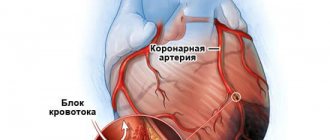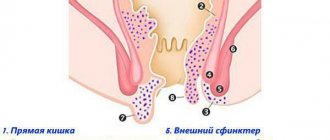From ancient Greek, the word “coma” is translated as “deep sleep.” In the myths of those distant times, the god of sleep, Hypnos, was called the brother of Thanatos, the messenger and personification of death. In modern medicine, “deep sleep” in a coma is also considered borderline and near-death.
In this state, consciousness is lost, reflexes fade, the frequency and depth of breathing is disrupted, the pulse and vascular tone change abnormally, and the mechanisms of temperature regulation are disrupted.
What causes coma?
The coma is caused by impaired blood circulation in the brain and/or toxic damage to the cells of the central nervous system. These pathologies arise for the following reasons:
- head injuries;
- drowning, suffocation, cardiac arrest;
- stroke;
- decompensated diabetes mellitus;
- meningitis, encephalitis;
- kidney or liver dysfunction as a result of poisoning or disease;
- epileptic seizures that follow one after another.
In addition, there is an artificial medical coma. It is used as an alternative to anesthesia if a neurosurgical operation is performed, as well as when the patient is brought out of an epileptic state.
Common Causes
The listed pathologies and injuries in the subtypes of comatose states are not an exhaustive list of possible root causes. Also, not all of them are common. Therefore, it is worth paying attention to the most common causes of coma in people of different ages and conditions. Thus, they can vary significantly among adults, children and pregnant women.
Adults most often fall into a coma when they have a sudden stroke that causes bleeding in the brain. This root cause accounts for approximately 50% of cases. The second place in the frequency of coma development is occupied by drug abuse and is about 15%. They are followed by TBI in accidents, drug poisoning, diabetes and alcohol intoxication. Often, a cancer patient or a person with heart problems may encounter this condition.
Even newborns can fall into a coma. This happens when infected with infections. Children experience noticeable symptoms in a comatose state; the signs usually boil down to convulsions, disturbances in consciousness and hemodynamics. A preschool child may experience this condition due to poisoning with drugs or chemicals. A common cause in schoolchildren is head injuries, and in adolescents – alcohol or drug abuse. Hypoxia and hypovolemia are also considered a common cause for children of any age.
In pregnant women, a coma can develop from heavy loads on a weakened body. Women who have chronic diseases, hereditary predisposition or allergies are most at risk of experiencing this. Very often, the root cause is heart problems, liver dystrophy, nephropathy, eclampsia, diabetes combined with hyperglycemia, atherosclerosis, hypertension, tumors, infections, as well as excess lactate or lack of insulin.
Coma can be dangerous not only for the pregnant woman, but also for the fetus. The risk of losing a child in this condition is very high.
Depth of coma
A comatose state can develop gradually over several days, or occur suddenly in a matter of minutes. According to the degree of depth, the following stages of coma are distinguished:
- Precoma with severe retardation or, on the contrary, psychomotor agitation. Reflexes are preserved, coordination of movements is impaired, thinking suffers.
- The first degree, in which sleep or stupor occurs. Reactions to external stimuli are inhibited, but the person can take liquid food and make simple movements.
- Second degree, the stage of deep sleep with a complete lack of contact, pathological forms of breathing, rare chaotic movements, weakened pupillary response to light, convulsive muscle twitching.
- The third degree, in which there is no consciousness, there is no reaction to painful stimuli, reflexes are lost, the normal breathing rhythm is lost, blood pressure drops, and body temperature decreases.
- The fourth degree or extreme coma, in which reflexes disappear, muscle tone is absent, and blood pressure and temperature drop sharply. Spontaneous breathing stops. It is supported by artificial ventilation, and nutrients are injected.
Death most often occurs in a state of extreme coma. However, if a person can be brought out of it, and further improvement occurs, then brain functions can be restored partially or completely.
Consequences
Signs of a coma may suddenly begin to subside, and the patient will emerge from an unconscious state. In the second stage, such an outcome is not considered uncommon. The prognosis is determined by the underlying cause of the coma and its severity, but most often people manage to survive.
When a person comes out of a coma, his reflex and autonomic components of the central nervous system first normalize. Consciousness is restored gradually, most often the victim begins to understand those around him episodically. This period may be accompanied by delirium, convulsions, or chaotic movements of the limbs. Brain activity returns to normal after some time. Patients usually do not remember that they were comatose.
After returning to a conscious worldview, a person will need good rehabilitation. He should be treated by physiotherapists, massage therapists and a team of doctors monitoring his condition. If the muscles have been atrophied or negative changes of another kind have occurred to them, then additional work will be required to restore their functions.
The consequences of a coma may be less pleasant. Many patients experience problems with memory, attention, or thinking. Some of them cannot speak fully, experience seizures and even have mental disorders. Hallucinations or outbursts of aggression are possible. The development of cystitis, as well as inflammation of the lungs or blood vessels, cannot be ruled out from long-term use of medications.
In a 2nd degree coma, some disorders may be irreversible. It all depends on whether the brain cells were destroyed. Some patients may die. Some of them can be saved from a state of clinical death with the help of timely resuscitation actions.
Second-degree coma is a dangerous condition that requires urgent medical intervention and hospitalization of the patient. Only hospital conditions with maintenance of respiratory function will help him get a chance to return to conscious life. In this case, the main task of doctors will be to find the root cause of this effect and eliminate it. If this can be done while preserving all brain cells, then the patient will be able to live the same way as before, immediately after rehabilitation.
Communicating with a person in a coma
Those who managed to come out of a coma say that they felt as if they were in an extremely deep sleep. Some report that very near-death tunnel, at the end of which a bright light was visible. Almost everyone remembers nothing about the events that led to the coma, and, moreover, about what happened to them in this state.
However, although comatose patients have no reaction to external stimuli, there is reason to believe that some forms of subconscious perception still remain. Therefore, the British Department of Health has made the following recommendations for those visiting a relative, loved one or friend who is in a coma:
- Introduce yourself and share the news in a positive way.
- Talk about your current life as if the person in a coma were an ordinary interlocutor, or rather, a listener.
- Show your support. To do this, just sit next to him and hold the person’s hand.
- Let him listen to his favorite music using headphones.
Caring for a patient in a coma
A patient in a comatose state after a stroke needs good care. Daily observation is required, as well as proper, professional care. After a person is admitted to intensive care, the first step is to connect all the necessary equipment that will support the person’s life.
The diet should consist of nutrients, but to avoid stomach problems, it is sometimes worth giving regular food prepared at home, of course, within the limits of a healthy diet.
Prevention of bedsores is necessary, since the patient lies for days. The patient's hygiene must be maintained, and bed linen must be changed when soiled or once a week.
Rehabilitation after a coma
To bring a patient out of a coma, doctors make many attempts, and this process takes an indefinite amount of time. If persistent efforts are successful, the person’s consciousness returns, the mood for recovery is formed, and rehabilitation is carried out under the supervision of specialists.
For this purpose, targeted centers with multifaceted rehabilitation programs are created. In the Minsk region, one operates in the Aksakov region. Those who require specialized assistance are there free of charge.
Therapy
After transporting the patient to a medical facility, doctors from the intensive care unit will take charge of his health. The first actions will be aimed at ensuring breathing and blood circulation using hospital devices. After this, the patient awaits an urgent examination in order to make an accurate diagnosis and confirm the coma.
Diagnosis is made by taking an anamnesis. If the victim remains unconscious, his relatives may be called in to help. Doctors will also conduct a physical and neurological examination to assess the condition of the body. If anyone is suspected, their stage will be assessed using the Glasgow scale or another relevant one at that time. In addition, you will need to conduct laboratory tests with the study of blood and urine, neuroimaging and measure intracranial pressure. If the diagnosis remains unclear, an EEG or lumbar puncture may be prescribed.
The basis of treatment is various medications aimed at eliminating the root cause of coma. Doctors have to be very careful in their choice, since a coma makes it impossible to use some drugs. The patient’s survival will depend only on correctly selected medications.
Types of medications:
- anticonvulsants;
- sedatives;
- antiemetics;
- antipyretics;
- antibiotics;
- vitamin B;
- glucose.
If there is a suspicion of poisoning by low-quality food or medications, the patient may also be prescribed gastric lavage. If there are tumors or some other damage to the brain, surgery is often required.
The sooner the doctor begins treatment, the higher the chances of a positive outcome.
How is it determined that coma has turned into death?
Modern medicine is able to maintain breathing, cardiac activity and provide nutrition for a long time to a person in a deep coma. Death is declared when blood flow to the brain stops and irreversible pathological changes occur.
These changes are diagnosed using computed tomography or magnetic resonance imaging. The absence of any brain activity is determined by electroencephalography methods, and cessation of cerebral circulation is recorded angiographically.
Based on the totality of the obtained indicators, death is diagnosed and, in agreement with relatives, life support equipment is turned off.
First aid
An inexperienced person will not be able to distinguish a sudden coma from a normal loss of consciousness. Since these are completely different phenomena in terms of danger, under no circumstances should you take rash actions to provide assistance. It is necessary to immediately call an ambulance so that specialists can determine the real condition of the patient. While waiting for the team, it is necessary to take important pre-medical measures aimed at preventing blockage of the airways.
Necessary actions:
- Place the victim in a lateral position.
- Unbutton the top of your clothing and loosen the collar.
- If he is partially conscious, find out what happened, clarify the location of the pain, ask about chronic diseases and the availability of medications.
When the ambulance is on site, all that remains is to quickly transport the person to the nearest hospital. In this case, the patient will be provided with respiratory function support using an oxygen mask, blood circulation will be stimulated, and the cervical spine will be stably fixed. If necessary, he will be given the necessary medications.
Question and answer
Does it happen that a patient comes to his senses after he has been declared brain dead?
Such cases do happen. For example, on December 23, 2011, doctors definitely and objectively confirmed the brain death of 21-year-old American student Sam Schmidt, who fell into a deep coma after an accident. Sam's parents were advised to think about consenting to the removal of their son's organs for transplantation, and an hour later a consultation was to be held on the issue of turning off the equipment that supports life in his body. Suddenly Sam moved his fingers, began to respond to calls and woke up.
How to get to the rehabilitation center in Aksakovshchina?
From the metro station "Pushkinskaya", "Kamennaya Gorka" by minibus 1203 TK, from the railway station, metro station "Kamennaya Gorka" - by minibus 1500 TK.
Do the Belarusian media publish information about those who came out of a coma, about what they felt?
The most recent publication with such interviews was on the TUT.BY website in the “Health” section on May 20, 2021.









